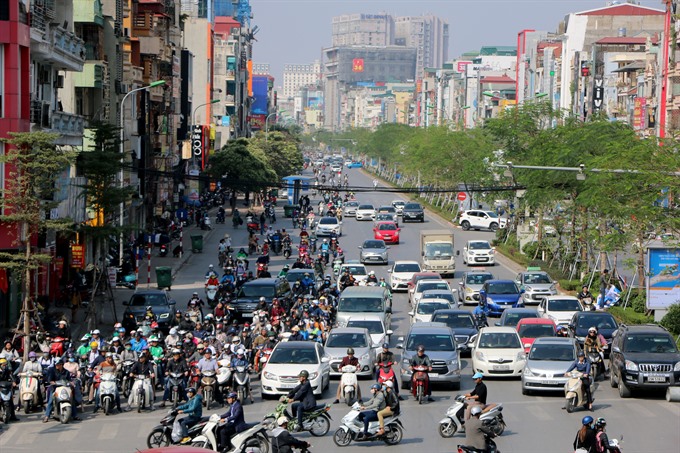 Society
Society

Việt Nam had been immersed in a golden period of urbanisation with a growing number of city development projects. This period is predicted to continue after 2050 but could prove challenging.
 |
| The crowded Ô Chợ Dừa Street in downtown Hà Nội. Việt Nam has witnessed a rapid pace of urbanisation since the late 90s. — VNS Photo Đoàn Tùng |
HÀ NỘI — Việt Nam had been immersed in a golden period of urbanisation with a growing number of city development projects. This period was predicted to continue after 2050 but could prove challenging, said Associate Professor Architecture Phạm Thúy Loan, deputy director of Việt Nam National Institute of Architecture at a seminar on urban design and development in Hà Nội yesterday.
The seminar was held among a series of events within “Danish Week – Sustainable and Livable Cities”.
According to the Urban Development Department under the Ministry of Construction, Việt Nam had witnessed rapid urban development with the number of cities increasing from 629 in 1999 to 819 in 2018. The urban coverage is now 38.3 per cent compared to 19.6 per cent in 1999.
The Government’s plan targets 934 cities by 2025 and more than 1,000 cities after 2050.
Participants at the seminar heard that HCM City had been paralysed by the ninth typhoon of the season over the past few days, showing a clear example of how cities in Việt Nam were being impacted by climate change.
Cities in Việt Nam might also face a number of other challenges posed by delays to major projects, unattended waste treatment systems and social gaps and imbalanced development between construction and nature.
“There is a trend of transforming historical and cultural sites into shopping malls. Investors tend to exploit valuable spaces and visitors have to pay fees to visit them, which is a risky trend and will affect the livability of the cities in Việt Nam,” architecture Loan said.
She said that new urban areas in Việt Nam also lacked space for bicycles and pedestrians.
“There is demand for travelling by bike and walking but there is no voice fighting for that. Several independent groups have pioneered campaigns for bike advocacy but there has been no combination of actions from all stakeholders and policies from State level to provincial level to facilitate cycling in the cities,” she said.
Tina Saaby, chief city architect of Copenhagen, known as the city of bikes, recommended Việt Nam should prioritise investment in space for bikes and public transport.
"We should discuss with people how we can change behaviour of not going by motorbikes and walking more or changing motorbikes to bikes," she said.
From the current practice of making Danish cities attractive and sustainable, Professor Tom Nielsen from Denmark’s Aarhus University of Architecture said that opening public spaces was a recommendation for Việt Nam to develop livable cities.
According to Loan, Việt Nam’s population is in a golden era, with 65 per cent of its population of a working age.
Saaby said that putting people first was one of the most important factors in the process of transforming Denmark’s capital to what is now known as one of the most sustainable and livable cities in the world.
“In Copenhagen, we think of urban life before designing urban spaces and of urban space before designing buildings. We do this because it is urban life that makes the city. There is no city without the people who use it, who live, work and move around in its buildings and streets,” she said.
“Danish Week – Sustainable and Livable Cities”, which kicked off yesterday, is a week-long series of urban design and development activities co-hosted by the Danish Embassy in Việt Nam and Việt Nam’s Ministry of Construction.
The event includes seminars, classes and tours of urban areas and architectural projects in both Hà Nội and HCM City. — VNS